The sound still haunts me. It was a soft whimper, barely audible above the din of traffic on that busy street corner three years ago. When I turned around, I saw her—a skeletal dog, matted fur clinging to her fragile frame, eyes that had long given up hope of finding kindness in this world.
In that moment, staring into those defeated eyes, I realized something that changed my perspective forever: we are all complicit in a system that normalizes unimaginable suffering.
That encounter wasn’t unique. Every day, across our planet, millions of sentient beings endure pain, terror, and despair at human hands. Yet most of us move through our daily lives blissfully unaware of the industrial machinery of cruelty that operates in the shadows, churning out products for our convenience while grinding up lives in the process.
This isn’t just about statistics or abstract ethics—this is about our collective moral failure and the urgent need for transformative change.
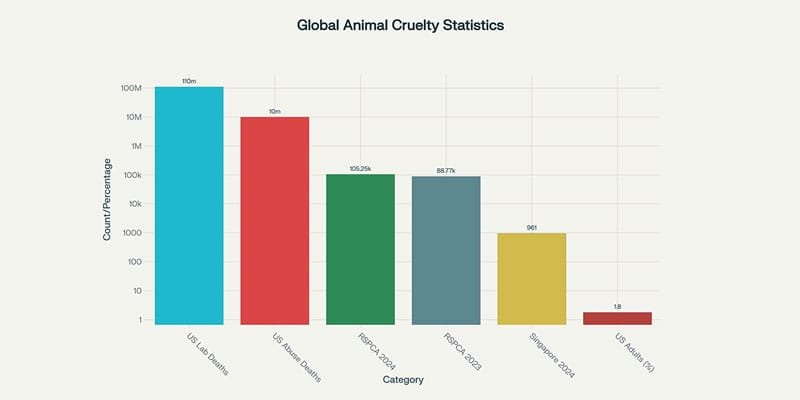
The numbers paint a devastating picture that should shake us all awake. Every single year, 10 million animals die from abuse and cruelty in the United States alone. That’s over 27,000 animals every day—more than one every three seconds.
But even these staggering figures barely scratch the surface of a crisis that spans continents and touches every corner of our industrialized world.
Table of Contents
The Expanding Shadow of Suffering
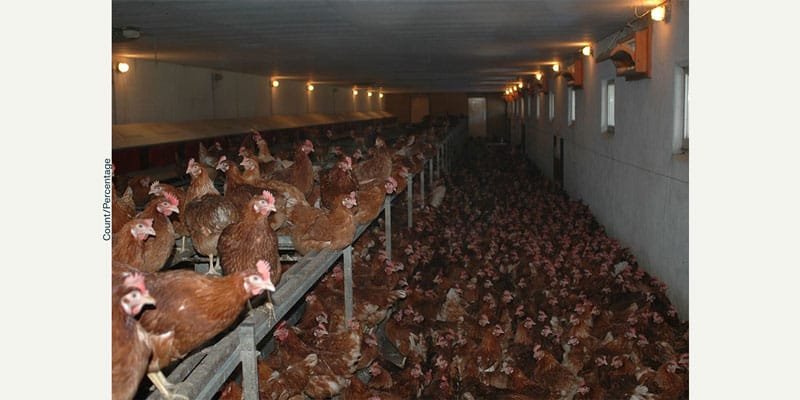
How did we reach this point? How did we build a world where causing pain to defenceless creatures became not just acceptable, but profitable? The RSPCA received 105,250 cruelty reports in 2024, representing a 19% increase from the previous year.
This isn’t an aberration—it’s part of a troubling global trend that reflects our society’s growing disconnection from compassion.
In Singapore, authorities investigated 961 confirmed cases of animal cruelty and welfare violations in 2024, the highest number recorded in 12 years.
The cases ranged from abandonment and physical abuse to death and inhumane trapping, affecting over 2,190 animal victims. Each number represents a life cut short or tormented unnecessarily.
Perhaps most disturbing is the clinical, systematic nature of much of this suffering. Over 110 million animals are killed in U.S. laboratories annually, often for experiments that could be replaced by more accurate, humane alternatives.
Meanwhile, research indicates that approximately 1.8% of U.S. adults—about 2 out of every 100 people—actively engage in animal cruelty. These aren’t isolated sociopaths; they’re our neighbours, colleagues, and community members.
These topics may also interest you:
- How can we protect the animals in winter
- 7 Reasons why you should adopt a shelter Dog or Cat
- Types of Lizards
The Industrial Machine of Suffering
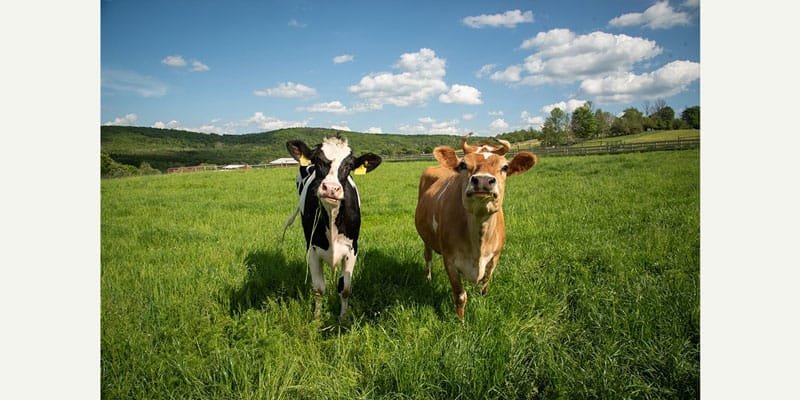
The factory farming industry represents perhaps the most systematic and widespread form of animal cruelty ever conceived by human beings. More than 99 percent of farmed animals live their entire lives on factory farms, where they endure conditions so appalling that if we subjected a single dog or cat to them, we would face criminal charges.
Consider the reality: egg-laying hens are confined to battery cages that give each bird roughly the same amount of floor space as a piece of printer paper. These intelligent, social creatures—animals capable of recognizing over 100 individual faces and experiencing complex emotions—can’t even spread their wings without hitting the sides of their cages or other birds.
They live like this for their entire productive lives, never feeling grass beneath their feet or sunshine on their backs.
The numbers are staggering. In the United States alone, animals on factory farms produce an estimated 885 billion pounds of manure each year. To put that in perspective, that’s nearly 3,000 pounds of waste for every person in America.
None of this waste is treated or regulated by government agencies, creating environmental disasters that poison our air, water, and soil.
But let’s not lose sight of the individuals behind these statistics. Take female pigs, who are confined to gestation crates barely larger than their bodies during their four-month pregnancies.
These intelligent animals—more intelligent than dogs, capable of playing video games and solving complex puzzles—can’t even turn around to see their new-born piglets before the babies are torn away from them after just weeks.
Approximately 30 percent of broiler chickens are unable to walk properly due to genetic manipulation designed to make them grow faster.
These birds, bred to reach slaughter weight in just six weeks instead of their natural six months, often collapse under their own unnaturally heavy bodies, unable to reach food or water. Many die from heart attacks because their cardiovascular systems can’t support their artificially enlarged frames.
Why does this systematic torture continue? Follow the money. The world’s biggest meat producer, Brazil-based JBS, recently announced a record $72.6 billion in global net revenue.
The industry’s gross profits have increased by more than 120% since before COVID-19, while their net income has surged by 500%. These companies are literally profiting from suffering.
These topics may also interest you:
The Dangerous Connection: Animal Cruelty and Human Violence
Perhaps you’re thinking, “This is terrible, but it’s just about animals.” If so, you’re missing a crucial piece of the puzzle that makes animal cruelty a human crisis as well. Research consistently shows a direct link between cruelty to animals and violence toward humans.
A landmark 1997 study found that animal abusers are five times as likely to also harm other humans. This isn’t coincidence—it’s pattern recognition at its most chilling.
Seventy-five percent of abused women who have companion animals report a history of their pets being threatened or intentionally harmed by their intimate partner. Even more disturbing, children witness this violence over 90% of the time.
The statistics become even more alarming when we examine specific contexts. A 2013 study found that 43% of those who commit school massacres also committed acts of cruelty to animals. Meanwhile, 88% of homes where physical child abuse was being investigated also showed evidence of animal abuse.
This isn’t just correlation—it’s about the psychology of power and control. Domestic abusers deliberately target beloved pets because they know it’s an effective tool of psychological terrorism.
More than half of women in domestic violence shelters report that they delayed their escape out of fear for their animals. Imagine being trapped in that impossible choice: save yourself or save the innocent creature who depends on you.
The implications extend far beyond individual cases. We’re talking about a society that systematically teaches people that causing suffering to the vulnerable is acceptable, normal, even profitable. Is it any wonder that this mindset spills over into human relationships?
These topics may also interest you:
Environmental Catastrophe: The Planet Pays the Price
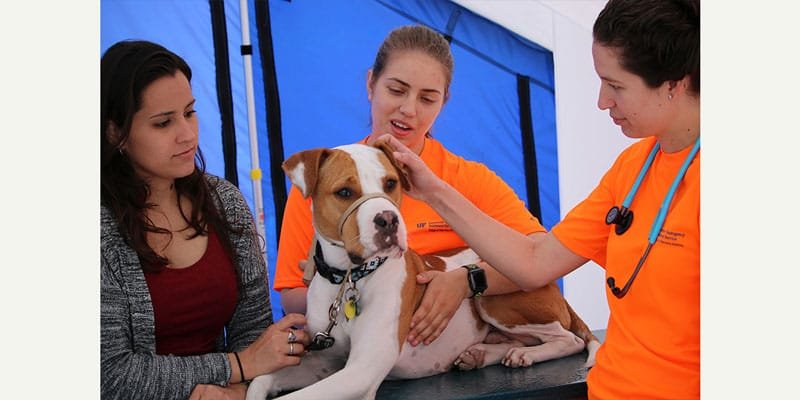
The environmental destruction caused by animal agriculture represents an existential threat to our planet’s future. Factory farms contribute at least 11% of global greenhouse gas emissions fueling climate change, but the true impact extends far beyond these numbers suggest.
Animal agriculture represents 14.5% of all human-caused greenhouse gas emissions globally. To put this in context, that’s more than the entire transportation sector in many countries. Factory farms emit methane and nitrous oxide, which are up to 300 times more damaging as greenhouse gases than carbon dioxide.
The global scope of this environmental assault is staggering. The agricultural sector is responsible for about one-third of global greenhouse gas emissions, with animal agriculture accounting for nearly 60% of those emissions—double the amount from raising fruits and vegetables.
Meanwhile, approximately 70% of all anthropogenic emissions of nitrous oxide result from crop and animal agriculture combined, with farm animal production accounting for 65% of global nitrous oxide emissions.
But the climate crisis represents just one facet of animal agriculture’s environmental devastation. Nearly 50% of corn and 70% of soy grown in the U.S. is produced to feed animals raised in factory farms.
These crops consume vast quantities of water and require enormous amounts of fossil fuels and pesticides. We’re essentially converting plant-based calories that could feed humans directly into animal-based calories at a massive efficiency loss, all while poisoning our environment in the process.
Consider the cruel irony: while millions of people around the world face hunger, we’re feeding perfectly good human food to animals in factory farms, then slaughtering those animals for meat that’s distributed primarily to wealthy consumers.
The Global North’s factory farms are responsible for $8.65 billion worth of climate-related damage across recent disasters in Africa, Asia, and South America. We’re literally exporting suffering while importing destruction.
These topics may also interest you:
The Moral Imperative: Why Animals Deserve Better
The philosophical case for animal rights isn’t complicated—it’s simply a matter of consistency in our moral reasoning. If a being is sentient—capable of experiencing episodes of positively or negatively valenced awareness—then it has direct moral status. This isn’t radical philosophy; it’s basic logic.
Animals feel pain, pleasure, joy, elation, contentment, suffering, depression, and anxiety. They have beliefs, desires, perception, memory, and a sense of the future. They possess emotional lives and can initiate action in pursuit of their goals. Most crucially, they have individual welfare in the sense that their experiential life fares well or ill for them, independent of their utility to others.
The argument from marginal cases demolishes any attempt to justify our treatment of animals based on cognitive differences. If we grant moral status and rights to human infants, people with severe cognitive disabilities, or those in comas—all of whom may lack many cognitive abilities that healthy adult animals possess—then intellectual honesty demands we extend the same consideration to animals.
Tom Regan’s groundbreaking work on animal rights articulates this clearly: animals are “subjects-of-a-life” with inherent value who cannot be regarded as merely means to human ends. They must be treated as ends in themselves, deserving of fundamental rights to life, liberty, and freedom from torture.
The utilitarian perspective, championed by philosophers like Peter Singer, reaches similar conclusions through different reasoning. If we’re going to consider the interests of all affected parties in our moral calculations—which any reasonable ethical system must do—then the capacity to suffer, not species membership, becomes the relevant criterion. The pain experienced by a pig or chicken is just as morally significant as pain experienced by a human child.
Yet we continue to justify atrocities against animals based on nothing more than species membership—a prejudice philosophers call “speciesism.” This arbitrary discrimination is no more defensible than racism or sexism. Many animal rights advocates hold that animals should not be considered property or used as food, clothing, entertainment, or beasts of burden merely because they are not human.
These topics may also interest you:
- What to Expect When You’re Expecting a New Puppy: A Guide for First-Time Owners
- How to Introduce Your Cat to Other Pets
- 10 Surprising benefits of having a cat in your life
Legal Progress and Persistent Challenges
The legal landscape around animal welfare is evolving, though painfully slowly compared to the urgency of the crisis. The European Union has announced plans to revise animal welfare legislation with broader scope and easier enforcement, including the phasing out of cages.
In 2023, the Commission adopted proposals to update animal transport regulations and create the first EU regulation on dog and cat welfare and traceability.
In India, important changes came into effect in July 2024 with the replacement of the Indian Penal Code by the Bharatiya Nyaya Sanhita. Killing or maiming an animal is now punishable under Section 325, while attempts to kill or maim fall under Section 62.
However, the new code fails to criminalize sexual abuse of animals, representing a step backward from previous protections.
The United States maintains the Animal Welfare Act, which regulates treatment of animals in research, teaching, testing, exhibition, transport, and by dealers. However, the law’s protections remain inadequate and enforcement often lacks teeth.
Meanwhile, the Prevention of Cruelty to Animals Act in India prescribes fines as low as Rs. 10 to Rs. 50 for first-time cruelty offenses—penalties so minimal they amount to licensing cruelty rather than preventing it.
Perhaps most frustratingly, legal definitions of cruelty often exempt the very industries causing the most suffering. Factory farming practices that would constitute felony animal abuse if applied to dogs or cats remain perfectly legal when inflicted on farm animals. This legal schizophrenia reflects our society’s arbitrary moral hierarchies rather than any coherent ethical framework.
These topics may also interest you:
- Common health problems in cats and how to prevent them
- 10 Common Health Issues in Hamsters and How to Treat Them
- Why Hamsters Are The Best Small Pets For Kids
Beacons of Hope: Success Stories That Light the Way
Despite the overwhelming scale of the crisis, remarkable individuals and organizations are proving that transformative change is possible. IFAW rescued more than 5,000 animals from floods in Brazil in 2024, saved over 100 dolphins in the largest mass stranding in U.S. history, and helped 200 animals in the wake of hurricanes Helene and Milton.
Consider Yuna the lioness, whose story embodies both the depths of human cruelty and the heights of human compassion. Found in Ukraine in 2023, Yuna was rescued from a small enclosure where she was likely kept for illegal breeding.
She was overweight, injured, and unable to stand due to her long confinement on cold concrete. After suffering a concussion from missile attacks, she was eventually evacuated to The Big Cat Sanctuary in the UK, where she felt grass beneath her paws for the first time in her life.
PETA’s rescue work in 2024 demonstrates how individual intervention can transform lives. Amy Swinehouse, a pig acquired impulsively through Craigslist, found her permanent home when her foster guardian couldn’t bear to let her go. Gordon, a severely malnourished dog with a broken hip who showed up at a mobile clinic, now spends his days hiking, canoeing, and snuggling with his guardian in Massachusetts.
These aren’t just feel-good stories—they’re proof of concept for a more compassionate world. PETA’s fieldworkers completed 342 total live dolphin rescues in 2024, nearly five times their annual average. Organizations like Four Paws have rescued bears from basement captivity, lions from Bulgarian circuses, and countless dogs from Southeast Asian slaughter operations.
The success extends beyond individual rescues to systemic change. European regulators are accepting and promoting non-animal testing methods, with the JRC completing its largest validation study of 18 in vitro methods to identify endocrine-disrupting chemicals. These alternatives aren’t just more humane—they’re often more accurate, faster, and cheaper than animal testing.
These topics may also interest you:
- The Benefits of Adopting an Older Dog – Give Them a Second Chance
- 10 Reasons Why Dogs Make the Best Pets – Adopt a Dog Today
- How to protect pet dogs, cats and strays from heat wave
The Technological Revolution: Alternatives to Animal Exploitation
Scientific progress is rapidly making animal exploitation not just ethically indefensible but practically obsolete. Sophisticated tests using human cells and tissues, advanced computer modeling techniques, and studies with human volunteers are replacing animal testing across industries.
In medical research, “organs-on-chips”—tiny 3D devices created from human cells that function like miniature human organs—are providing insights that would be impossible to obtain from animal experiments.
These technologies have already been used to study lung cancer drug effects and test treatments for rare autoimmune conditions like chronic inflammatory demyelinating polyneuropathy.
The food sector is experiencing its own revolution. Plant-based meat alternatives are gaining acceptance globally, with over 60% of consumers in China and India expressing willingness to purchase them, compared to 33% in the United States.
While taste and price remain primary considerations for most consumers, environmental and health concerns are increasingly motivating dietary changes.
Research consistently shows that when plant-based alternatives are available, inexpensive, and tasty, consumers become much more receptive to ethical motivations. This creates a positive feedback loop: as alternatives improve and become more accessible, consumer acceptance grows, which drives further innovation and cost reduction.
The potential for scaling these solutions is enormous. Well-managed grazing systems can reduce livestock emissions by more than half compared to factory farming while potentially trapping the equivalent of 585 million tons of carbon over 20 years.
Meanwhile, shifting pigs to pasture-based systems could realize a 29% reduction in nitrous oxide emissions and a 7% reduction in methane emissions.
These topics may also interest you:
- 10 Tips for Traveling with Your Dog: Making Trips Hassle-Free
- How to Introduce a New Cat to Your Home
- 10 Pet Animals For Emotional Support
What Each of Us Can Do: The Power of Individual Action
Faced with such a massive crisis, it’s easy to feel overwhelmed and powerless. But history teaches us that transformative social change begins with individuals who refuse to accept the status quo. Every great moral advance—from the abolition of slavery to women’s suffrage to civil rights—started with people who decided they could no longer be complicit in systems of oppression.
The most impactful step most of us can take is reducing our consumption of animal products. You don’t need to become vegan overnight, but every meal represents a choice between supporting cruelty and choosing compassion.
The average American consumes over 220 pounds of meat per year—reducing that by even 50% would save dozens of animals annually while dramatically reducing your environmental footprint.
When you do purchase animal products, support producers committed to higher welfare standards. Seek out certified humane, pasture-raised, and organic options. Yes, they cost more, but that higher price reflects the true cost of producing animal products without extreme cruelty.
The artificially low prices of factory-farmed products are only possible because the costs—environmental destruction, animal suffering, public health risks—are externalized to society as a whole.
Support organizations doing direct rescue and advocacy work. Groups like the RSPCA, IFAW, PETA, Four Paws, and countless local animal shelters depend on donations to continue their lifesaving work. Even small contributions can make a meaningful difference when multiplied across thousands of supporters.
Use your voice and your vote. Contact your representatives about animal welfare legislation. Support political candidates who prioritize animal protection.
Share information about animal cruelty on social media—many people simply don’t know about the conditions in factory farms or the link between animal abuse and human violence.
Make ethical choices about entertainment and products. Avoid circuses that use animals, marine parks that keep whales and dolphins in captivity, and products tested on animals when cruelty-free alternatives exist. Support businesses that prioritize animal welfare and refuse to patronize those that profit from suffering.
If you have the capacity, consider volunteering at local animal shelters or rescue organizations. The hands-on experience of helping individual animals recover from abuse provides both emotional rewards and practical skills while directly reducing suffering.
These topics may also interest you:
The Collective Transformation We Need

Individual action, while necessary, isn’t sufficient to address a crisis of this magnitude. We need systemic change that transforms the economic, legal, and cultural structures that perpetuate animal cruelty.
We must demand stronger animal welfare laws with meaningful penalties and robust enforcement. Fines of $50 for animal cruelty—as still exist in many jurisdictions—are insulting to victims and useless as deterrents. We need laws that recognize animals as sentient beings with inherent rights, not mere property.
Corporate accountability must extend beyond voluntary guidelines to mandatory standards. Companies that profit from animal suffering should bear the full costs of that suffering, including environmental cleanup, public health impacts, and animal welfare improvements. Taxpayers shouldn’t subsidize industries that externalize their costs to society.
Educational systems must teach empathy and respect for all living beings from an early age. Children who learn to see animals as individuals worthy of moral consideration are less likely to accept cruelty as adults.
Research shows that children who witness animal abuse are at greater risk of becoming abusers themselves—breaking this cycle requires intentional intervention.
We need massive investment in developing and scaling alternatives to animal exploitation. Government research funding, private investment, and consumer demand must align to accelerate the development of plant-based foods, cellular agriculture, and non-animal testing methods.
The faster these alternatives achieve price and quality parity with animal-based products, the faster we can eliminate the economic incentives for cruelty.
These topics may also interest you:
- Types Of Pet Allergies and How to Treat Them
- Why I Started This Blog Page?
- 10 Ways to Get Involved with Pet Owners in Your City
Beyond Reform: Envisioning a Compassionate Future
Ultimately, ending animal cruelty requires more than policy changes or technological fixes—it demands a fundamental shift in how we see our relationship with other living beings. We must move beyond the anthropocentric worldview that places humans at the center of moral concern and embrace a more inclusive understanding of who matters.
This isn’t about treating animals exactly like humans—it’s about treating them like the sentient individuals they are. A pig doesn’t need the right to vote, but she deserves the right to express natural behaviors, feel sunlight on her skin, and live without constant fear and pain. A chicken doesn’t need access to education, but she deserves the ability to stretch her wings, dust-bathe, and care for her chicks.
The world we’re building with our current choices is morally bankrupt and environmentally unsustainable. Every day we delay meaningful action, millions more animals suffer needlessly while our planet edges closer to ecological collapse. The interconnected crises of animal suffering, environmental destruction, and human violence won’t be solved by half-measures or gradual reforms.
But there’s another path available to us—one that leads to a world where compassion guides our choices, where technological innovation serves ethical progress, and where the flourishing of all sentient beings becomes our shared goal. This isn’t utopian fantasy; it’s an achievable future that lies within our grasp if we have the courage to reach for it.
These topics may also interest you:
- How to educate people and children about animal welfare
- What are the conditions needed to become a foster parent for cats and dogs?
- How to Cope with Losing Your Pet
The Choice Before Us
I think often about that dog I encountered three years ago—the one whose whimper changed my perspective forever. I don’t know what happened to her, whether someone stopped to help or if she became another statistic in our society’s catalogue of cruelty.
But I know this: her suffering mattered. Her life had value independent of any utility to humans. She deserved better from us.
Every animal currently trapped in a factory farm, every creature being tortured in the name of science, every companion animal threatened by an abusive partner—they all deserve better from us. The question isn’t whether we have the ability to create a more compassionate world. The question is whether we have the moral courage to do so.
The evidence is overwhelming. The solutions exist. The only thing missing is our collective will to act. Will we be the generation that finally says “enough” to systematic cruelty? Will we be the ones who choose compassion over convenience, justice over profit, love over indifference?
The animals can’t speak for themselves in human language, but their suffering is a universal tongue that transcends species boundaries. They’re counting on us to be their voice, their advocates, their hope for a better future.
What will you do with that responsibility? How will you use your power as a consumer, a citizen, and a human being to end the cruelty that surrounds us?
The time for half-measures and comfortable ignorance has passed. The crisis demands nothing less than a revolution in how we treat our fellow earthlings. And that revolution begins with you—with all of us—choosing compassion today, tomorrow, and every day until the last cage is empty and the last cry of suffering is silenced forever.
The choice is ours. The time is now. The animals are waiting.
These topics may also interest you:
- Indoor vs. Outdoor Cats Pros and Cons
- Senior Pet Care Tips. How to Keep Your Aging Pet Comfortable?
- The Rise of Pet Tech: How Smart Devices Are Changing Pet Care
- Homemade Pet Food: Is It Healthier Than Store-Bought?
- How to Socialize Your Pet: Tips for Puppies, Kittens & Rescues
- How to Create a Pet-Friendly Home Without Compromising Style
- When Should Obedience Training Be Started for Puppies?
- 5 Fun Ways to Include Your Pet in Holiday Festivities
- Why Cats Make Amazing Companions
- How to Make Your Own Dog Treats

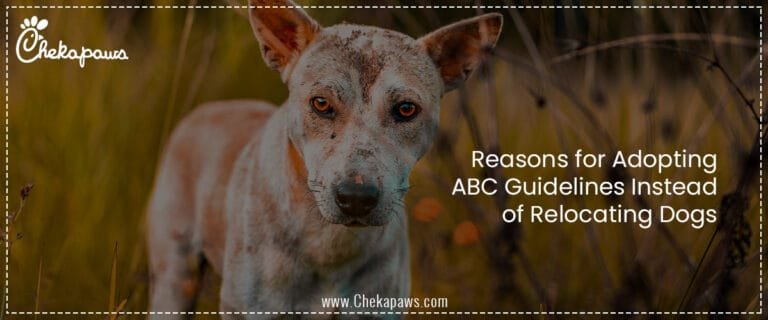






Waoo Nice
i have seen more of the times that People doing a misbehave for what only just for joy
What is this we should think about it